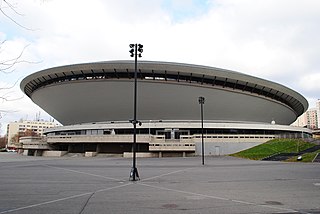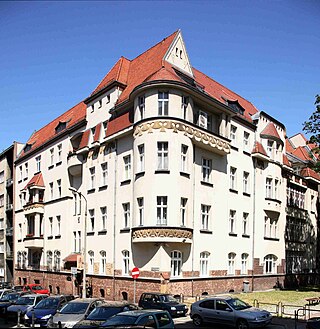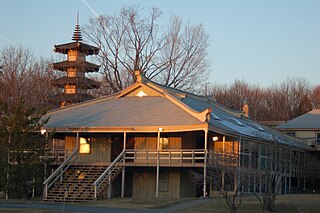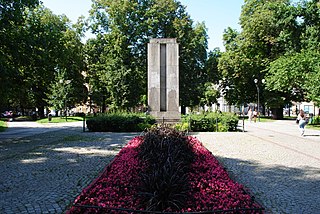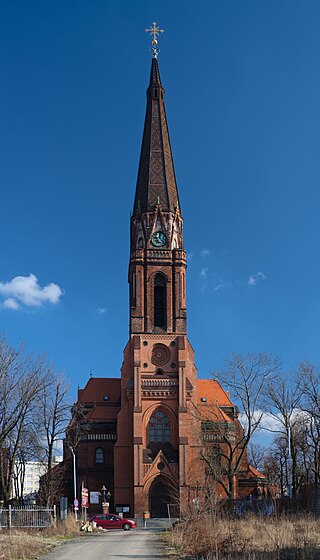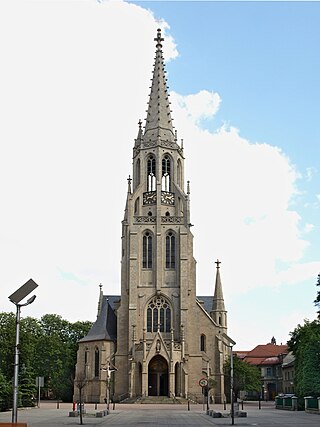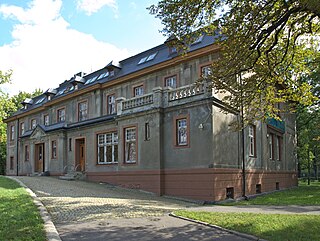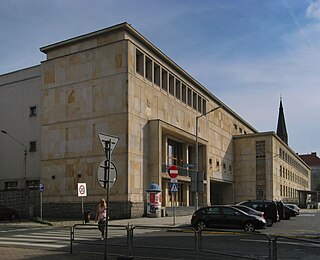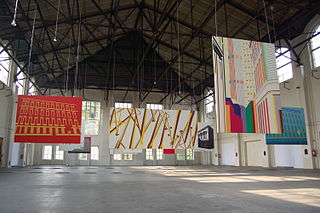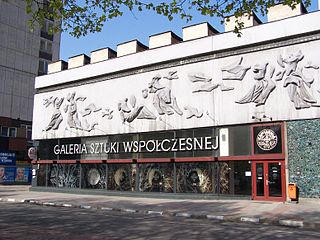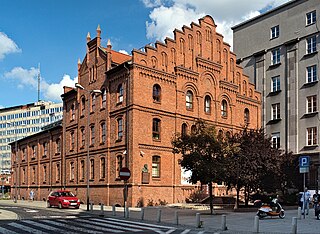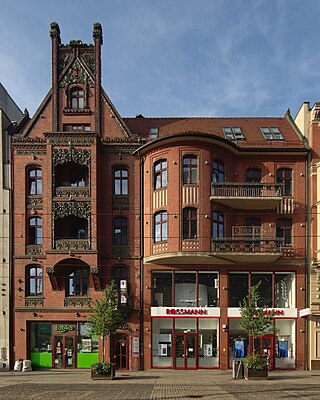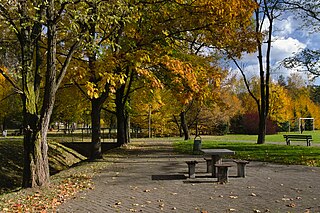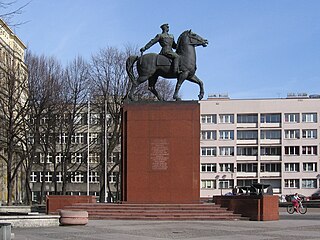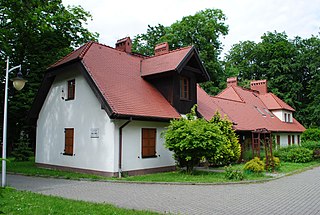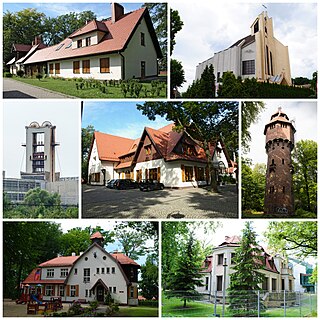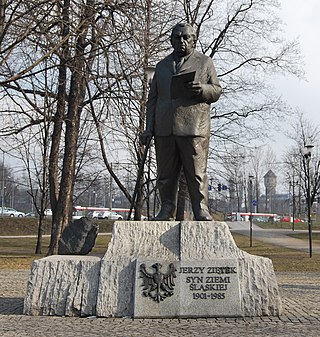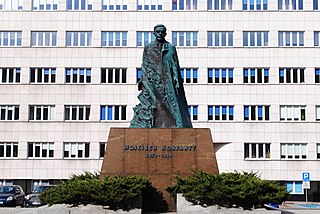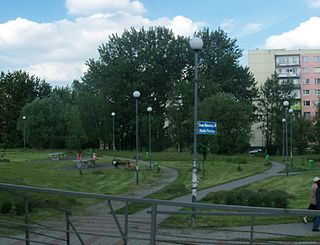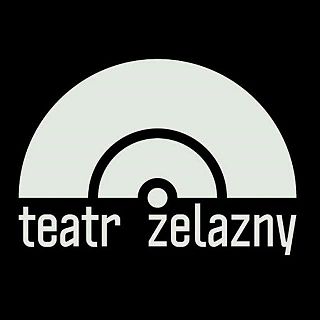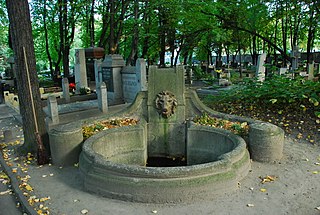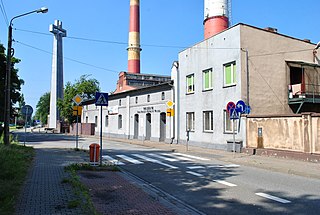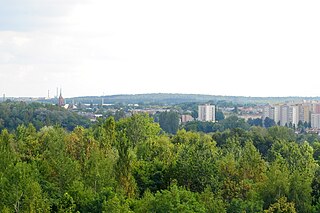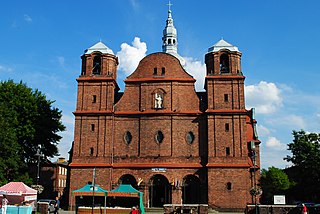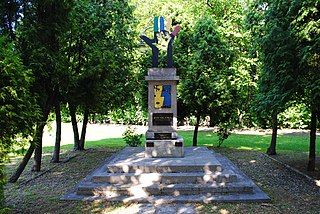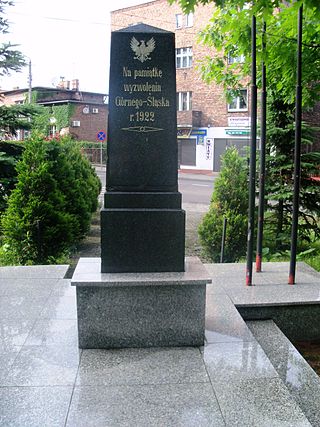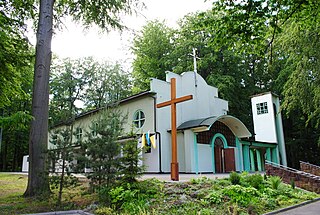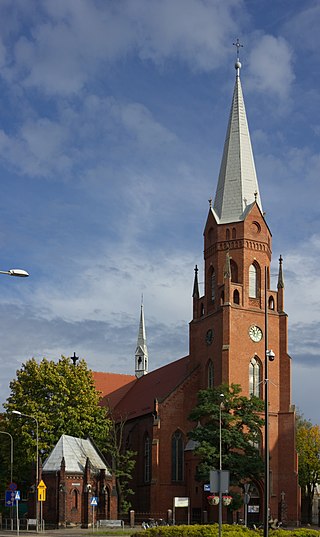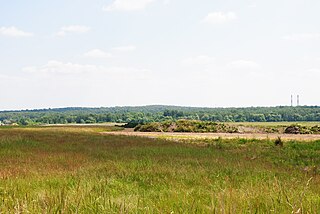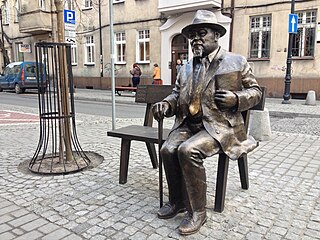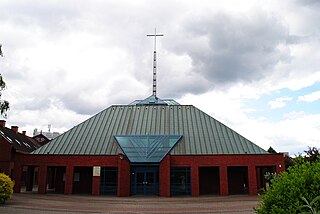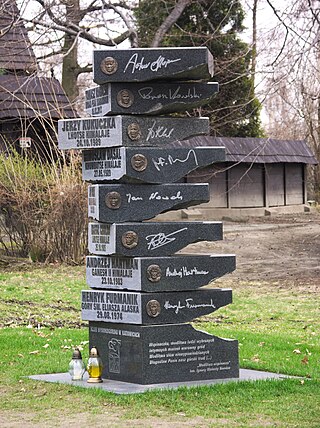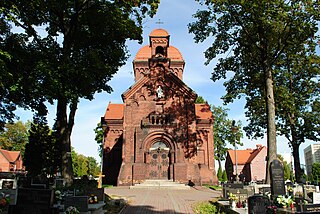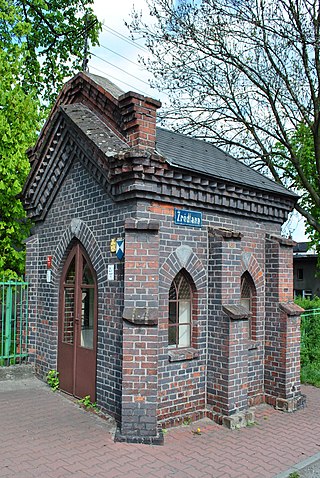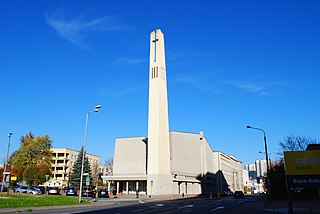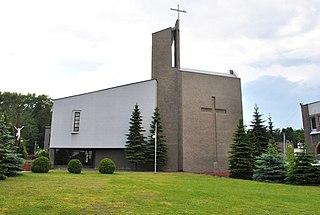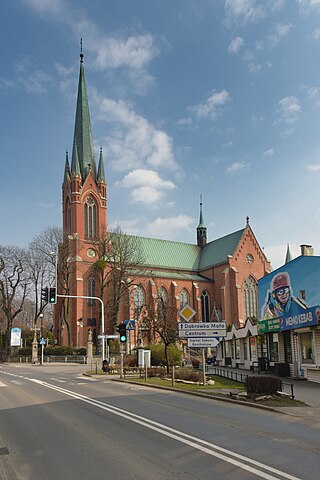66 Sights in Katowice, Poland (with Map and Images)
Legend
Welcome to your journey through the most beautiful sights in Katowice, Poland! Whether you want to discover the city's historical treasures or experience its modern highlights, you'll find everything your heart desires here. Be inspired by our selection and plan your unforgettable adventure in Katowice. Dive into the diversity of this fascinating city and discover everything it has to offer.
Sightseeing Tours in Katowice1. Spodek
Spodek is a multipurpose arena complex in Katowice, Poland, opened on 9 May 1971. Aside from the main dome, the complex includes a gym, an ice rink, a hotel and three large car parks. It was the largest indoor venue of its kind in Poland until it was surpassed by Tauron Arena in 2014.
2. Museum of Katowice History
The Museum of the History of Katowice – a local government cultural institution, whose tasks include documenting the past of Katowice and disseminating the historical, artistic and aesthetic values of the city as part of the Upper Silesian, Polish and European heritage.
3. Katowicki Ośrodek Zen Szkoły Kwan Um
The Kwan Um School of Zen (관음선종회,觀音禪宗會) (KUSZ) is an international school of zen centers and groups founded in 1983 by Zen Master Seung Sahn. The school's international head temple is located at the Providence Zen Center in Cumberland, Rhode Island, which was founded in 1972 shortly after Seung Sahn first came to the United States. The Kwan Um style of Buddhist practice combines ritual common both to Korean Buddhism as well as Rinzai school of Zen, and their morning and evening services include elements of Huayan and Pure Land Buddhism. While the Kwan Um Zen School comes under the banner of the Jogye Order of Korean Seon, the school has been adapted by Seung Sahn to the needs of Westerners. According to James Ishmael Ford, the Kwan Um School of Zen is the largest Zen school in the Western world.
4. Plac Wolności
Plac Wolności in Katowice – a city square located in the Śródmieście district of Katowice. The following streets radiate out of it: 3 Maja running towards the Market Square, Sokolska leading towards Koszutka and Bogucice, Gliwicka running towards Załęż and further – Chorzów, as well as short Jana Matejko and Sądowa streets. The square has recreational functions, is the starting point of manifestations, and is also an important transport hub, both for buses and trams.
5. Kościół pw. Świętych Apostołów Piotra i Pawła w Katowicach
The Church of Saints Peter and Paul in Katowice is a Roman Catholic church in Katowice, located at 34 Mikołowska Street in the Śródmieście district. It was erected in the years 1898–1902 in the neo-Gothic style according to the design of Joseph Ebers. In the years 1922–1925 he served as the pro-cathedral of the Apostolic Administration in Upper Silesia, and in the years 1925–1957 of the diocese of Katowice.
Wikipedia: Kościół Świętych Apostołów Piotra i Pawła w Katowicach (PL), Heritage Website
6. Cmentarz rzymskokatolicki
The Catholic cemetery at Francuska Street in Katowice – a necropolis founded in 1870 in connection with the construction of the church of the Blessed Virgin Mary. It is one of the oldest and most historically valuable necropolises in Katowice. It borders on the Evangelical cemetery located on the same street.
Wikipedia: Cmentarz przy ul. Francuskiej w Katowicach (PL), Heritage Website
7. Old Timers Garage
Old Timers Garage is a theatre and music club located in Katowice, Poland. Old Timers Garage is located in the historic, renovated rooms of the Piast Cinema. It is one of the most dynamically operating independent cultural units in the region. Since November 2009, over 600 cultural events have taken place in the club. Famous stars of the Polish and foreign music scene performed on its stage.
8. Bazylika Świętego Ludwika Króla i Wniebowzięcia Najświętszej Maryi Panny
The Basilica of St. Louis the King and the Assumption of the Blessed Virgin Mary – a neo-Romanesque monastery church in Katowice-Panewniki from the beginning of the twentieth century, a pilgrimage center during Christmas due to the nativity scene built every year. Together with the adjacent calvary, it is a place of worship of the Passion of Christ. It is a parish church for the parish run by the Franciscans from the Province of the Assumption of the Blessed Virgin Mary of the Order of Friars Minor in Katowice.
Wikipedia: Bazylika św. Ludwika Króla i Wniebowzięcia Najświętszej Maryi Panny w Katowicach (PL), Website, Heritage Website
9. Kościół pw. Niepokalanego Poczęcia Najświętszej Maryi Panny
The Church of the Immaculate Conception of the Blessed Virgin Mary in Katowice, also known as St. Mary's Church, is a Roman Catholic church in Katowice, located at Rev. E. Szramek Square in the Śródmieście district, closing the eastern end of Mariacka Street.
Wikipedia: Kościół Mariacki w Katowicach (PL), Website, Heritage Website
10. Muzeum Historii Katowic Dział Etnologii Miasta
The Department of Ethnology of the City of the Museum of the History of Katowice is a branch of the Museum of the History of Katowice in Katowice, in the Janów-Nikiszowiec district, at 4 Rymarska Street, in the complex of workers' buildings of the Nikiszowiec patronage housing estate from the first decade of the twentieth century.
Wikipedia: Dział Etnologii Miasta Muzeum Historii Katowic (PL), Website
11. Garrison Church of St Casimir
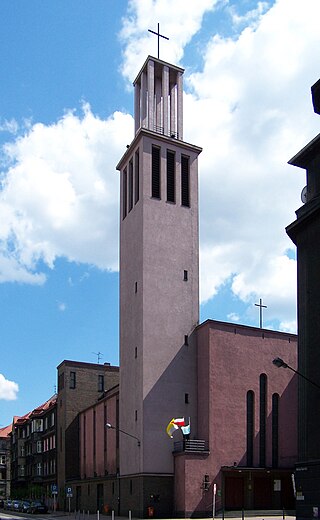
The garrison church of St. Casimir the Prince in Katowice – a historic garrison church of the Polish Army in Katowice, located at the corner of M. Kopernika and M. Skłodowska-Curie streets, in the Śródmieście district.
Wikipedia: Kościół św. Kazimierza Królewicza w Katowicach (PL), Heritage Website
12. Pałac w Załężu
The Palace in Załęż is a neoclassical palace located at 159 Gliwicka Street in Katowice, in the Załęże district. In the past, it was a part of the manor complex. The palace was built between 1886 and 1887 and originally housed the regional management of the Georg von Giesches Erben company. In the interwar years, it was the seat of the Giesche company, and now a private hospital.
13. Plac Grunwaldzki
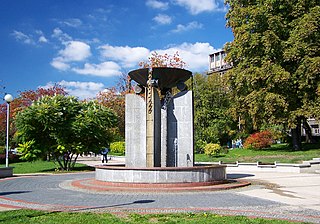
Grunwaldzki Square in Katowice is a square located in the Katowice district of Koszutka, in the northern part of the city. It is located between Sokolska Street, Gustawa Morcinka Street and Władysława Broniewskiego Street.
14. Pałac Młodzieży im. Aleksandra Kamińskiego
The Professor Aleksander Kamiński Youth Palace in Katowice is an out-of-school education institution of the city of Katowice. Pedagogical supervision over the Youth Palace is exercised by the Silesian Superintendent of Education in Katowice.
Wikipedia: Pałac Młodzieży w Katowicach (PL), Heritage Website
15. Galeria Szyb Wilson
The Wilson Shaft Gallery is a contemporary art gallery in Katowice at 1 Oswobodzenia Street, in the Janów-Nikiszowiec district, opened in 2001 in the revitalized building of the pithead and bathhouse of the Wilson shafts of the "Wieczorek" mine, whose history dates back to 1826.
16. Galeria Sztuki Współczesnej BWA
The BWA Gallery of Contemporary Art in Katowice – a contemporary art gallery established in Katowice in August 1949, then as a branch of the Central Bureau of Art Exhibitions. It is located at 6 Wojciecha Korfantego Avenue. Exhibition opening hours: except Mondays; daily 10.00 - 18.00.
Wikipedia: Galeria Sztuki Współczesnej BWA w Katowicach (PL), Website, Facebook
17. Budynek Łaźni Miejskiej
The Municipal Bathhouse building in Katowice – a public utility building at 5 Adama Mickiewicza Street in Katowice, erected in the years 1894–1895 in the eclectic style, rebuilt in 1911 and in the years 1996–1997, entered into the register of immovable monuments of the Silesian Voivodeship.
Wikipedia: Budynek Łaźni Miejskiej w Katowicach (PL), Heritage Website
18. Pomnik Harcerzy Września - Obrońców Katowic
The Monument to the Scouts of September – unveiled on September 4, 1983, a monument commemorating the martyrdom of Silesian scouts who in September 1939 resisted German soldiers and militants entering Katowice. The monument also commemorates scouts who died or were murdered in the later period of the German occupation.
19. Dom Oświatowy
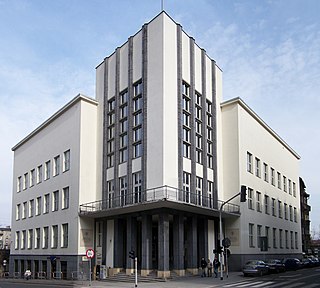
Educational House – Silesian Library – a building in Katowice, located in the city center at 12 Francuska Street. One of the examples of modernist architecture in Upper Silesia. Its designers were architects Stanisław Tabeński and Józef Rybicki. The building was designed in 1928 in the functionalist style, and it was completed in 1934.
Wikipedia: Dom Oświatowy – Biblioteka Śląska (PL), Heritage Website
20. Stary Dworzec Kolejowy
Katowice historic railway station was the main railway station of Katowice, in the Silesia region of what is now Poland. Built in 1859 and reconstructed and expanded several times, it was judged obsolete after World War II, and in 1972 decommissioned and replaced by the newly built Katowice railway station. Three years later it was declared a National Monument. It is partially ruined and owned by a private developer who plans to renovate the station buildings and develop the complex into a multifunctional center.
Wikipedia: Katowice historic railway station (EN), Heritage Website
21. Plac Rady Europy
Council of Europe Square in Katowice is a city square located in Katowice, in the Paderewskiego-Muchowiec district. To the east of the square there is the I. Paderewski housing estate. It is located at the junction of Graniczna, Powstańców, Księdza Konstantego Damrota and Przemysłowa Streets. From the north, there are outlets of short St. Hyacinth and Prosta streets.
22. plac ks. kard. Augusta Hlonda
Cardinal August Hlond Square in Katowice – a square located in the Śródmieście district of Katowice, in the city center. It is located between the following streets: Mikołowska, Henryka Jordana, Głowackiego and J. Poniatowskiego.
23. Kamienica Pod Butem
Tenement house at 3 Maja 6-8 Street in Katowice – a historic residential and commercial tenement house, located at 3 Maja 6 and 8 Street in Katowice, in the Śródmieście district. It is also called "Haus Kochmann" or "Kochmann's House", and its current name comes from the bas-relief on the coat of arms, depicting a shoe. The tenement house in its current shape was completed in 1907 in the Art Nouveau style with neo-Gothic and modernist elements, and its characteristic element is the decoration of the façade referring to oak. It is entered in the register of monuments.
Wikipedia: Kamienica przy ulicy 3 Maja 6-8 w Katowicach (PL), Heritage Website
24. Hotel Grand
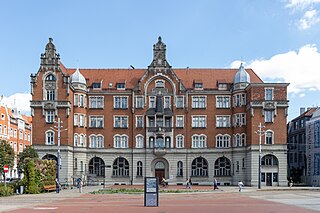
The building at Aleja Korfantego 3 in Katowice - a historic building in the neo -Renaissance style, located in Katowice at the Wojciech Korfantego 3 avenue, which was the seat of the Silesian Museum in 1984–2018.
Wikipedia: Gmach przy alei Korfantego 3 w Katowicach (PL), Heritage Website
25. Jan Paweł II
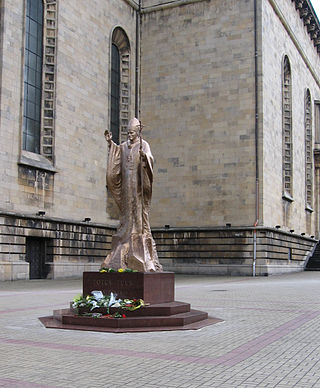
The Monument of Pope John Paul II is a monument in Katowice, located in the north-west corner of the Cathedral Square in Katowice. On the opposite side of Powstańców Street there is the John Paul II Square.
26. Park Bolina
Bolina Park – a city park located in Katowice at Leśnego Potoku Street, in the Janów-Nikiszowec district and in the vicinity of Giszowiec, by the Bolina and Bolina II ponds, on the Bolina River. It is equipped with sports and recreational facilities, and the area of the park is 4.71 ha.
27. Pomnik Józefa Piłsudskiego
Monument to Marshal Józef Piłsudski – unveiled in 1993, a monument to Józef Piłsudski located on Bolesław Chrobry Square, in front of the pediment of the building of the Silesian Voivodeship Office in Katowice. The monument was placed with its back to the building of the former Provincial Council of Trade Unions.
28. Izba Śląska
The Chamber of Silesia is a museum in Katowice, in the Giszowiec district at 3-3a Pod Lipami Square, presenting exhibits related to the culture and art of Upper Silesia, as well as paintings and memorabilia of the painter Ewald Gawlik. This seat is a branch of the Municipal Cultural Center "Szopienice-Giszowiec" in Katowice.
29. Giszowiec
Giszowiec is an eastern district of the city of Katowice, created as a coal miners' settlement in 1907. Initially consisting of about 3,300 miners and their families, the district's population have grown over the years to over 18,000. Although Giszowiec's architectural originality suffered major damages in the 1970s and 1980s due to large scale urbanization, its early unique character can be still felt in the surviving miners' housings, the marketplace, numerous individual buildings and structures, as well as the relatively well preserved general design of a "Garden city".
30. Wieża spadochronowa
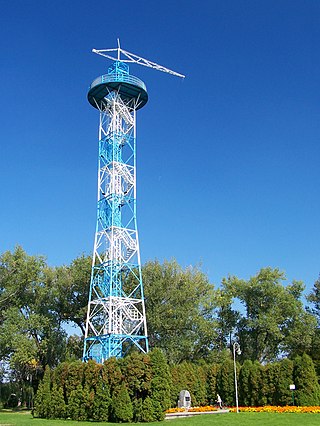
Parachute Tower in Katowice is a 35-metre tall lattice parachute tower built in 1937 for training parachute jumps. It was used in the first days of World War II by Germany's 73rd Infantry Division as an observation tower.
Wikipedia: Parachute Tower in Katowice (EN), Heritage Website
31. Park Giszowiecki
Giszowiecki Park in Katowice – a city park located in Katowice, in the central part of the Giszowiec district, located in the area of Pod Lipami Square and Gościnna, Wesołowska and Działkowa streets, with an area of 3.378 ha. It was built along with the construction of the Giszowiec patronage estate in the years 1907–1910 according to the design of Emil and Georg Zillmann, and the current name was established on October 25, 2010.
32. Pomnik Powstańców Śląskich
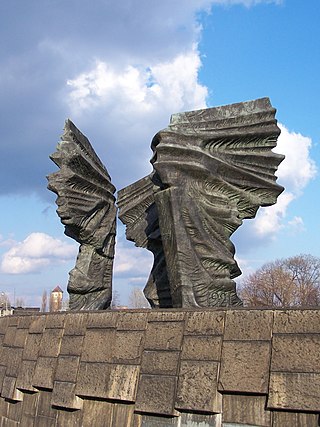
The Silesian Insurgents' Monument in Katowice, southern Poland, it is a monument to those who took part in the three Silesian Uprisings of 1919, 1920 and 1921. These uprisings aimed to make the region of Upper Silesia part of the newly independent Polish state. It is located nearby to the Spodek.
33. Jerzy Ziętek
The Monument to General Jerzy Ziętek is a monument in Katowice-Śródmieście, unveiled on 19 November 2005, on the eve of the 20th anniversary of the death of the former Voivode General Jerzy Ziętek (Jorg), located at the Katowice roundabout named after him.
34. Wojciech Korfanty
The Monument of Wojciech Korfanty in Katowice – a monument commemorating Wojciech Korfanty located on the square of the Silesian Parliament, between the Silesian Voivodeship Office and the Faculty of Philology of the University of Silesia in Katowice, unveiled on 19 June 1999.
35. Skwer rotmistrza Witolda Pileckiego
Captain Witold Pilecki Square in Katowice – it is a square located in the W. Witosa housing estate in Katowice. The square is located at the intersection of Wincenty Witosa Street and Michała Ossowskiego Street.
Wikipedia: Skwer Rotmistrza Witolda Pileckiego w Katowicach (PL)
36. Teatr Żelazny
Teatr Żelazny – a theatre in Katowice, with its seat at 148a Gliwicka Street in the Załęże district, founded in 2011 by Piotr Wiśniewski. It is run by the Żelazny Theatre Association, with performances for both adults and children, also in cooperation with other actors and theatre groups.
37. Evangelical Cemetery
The Evangelical cemetery at Francuska Street in Katowice is a necropolis at Francuska Street in Katowice, owned by the Evangelical-Augsburg parish in Katowice. It stretches between the streets: Francuska, Powstańców Śląskich and Konstantego Damrota, bordering the Catholic cemetery. In February 1993, it was entered into the register of monuments.
Wikipedia: Cmentarz ewangelicki przy ul. Francuskiej w Katowicach (PL), Heritage Website
38. Skwer Walentego Fojkisa
Walenty Fojkis Square in Katowice – a tree-lined square, located in the Wełnowiec-Józefowiec district of Katowice between Gnieźnieńska Street, Modelarska Street, M. Karłowicza Street and Wojciech Korfantego Avenue.
39. Drapacz Chmur
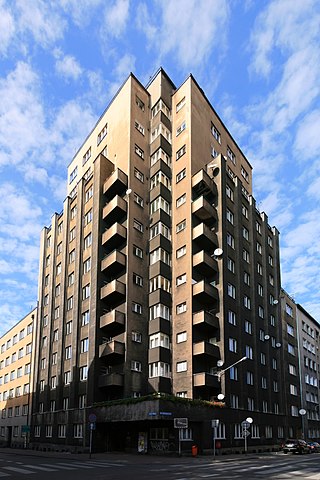
Drapacz Chmur is a historical building in Katowice, Silesia, Poland. It was the second skyscraper built in post-World War I Poland. Finished in 1934 after five years of construction, it made pioneering Polish use of steel frame construction. Today, Drapacz Chmur is considered the most spectacular and beautiful example of functionalism in Poland.
40. Święty Jan
The statue of St. John in Katowice – a statue, most probably depicting St. John the Evangelist, located in the Katowice district of Śródmieście, at the entrance of St. John Street to the Market Square.
41. Narodowa Orkiestra Symfoniczna Polskiego Radia
The seat of the Polish National Radio Symphony Orchestra in Katowice is a building located at 1 W. Kilara Square in Katowice, in the Bogucice district. This building is the seat of the Polish National Radio Symphony Orchestra in Katowice and is one of the buildings of the Katowice Culture Zone, which also consists of the International Congress Centre in Katowice and the Silesian Museum in Katowice.
Wikipedia: Siedziba Narodowej Orkiestry Symfonicznej Polskiego Radia w Katowicach (PL), Website
42. Archikatedra pw. Chrystusa Króla w Katowicach
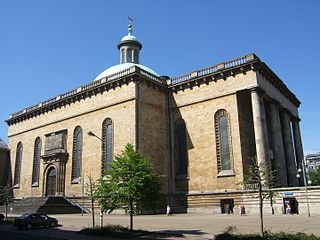
Archikatedra Chrystusa Króla w Katowicach is a classicist and modernist archcathedral in Katowice-Śródmieście, Katowice, Poland. Constructed between 1927 and 1955, the Archcathedral of Christ the King is the largest archcathedral and cathedral in Poland, 120,000 metres cubed large.
Wikipedia: Cathedral of Christ the King, Katowice (EN), Website , Heritage Website
43. Wzgórze Beaty
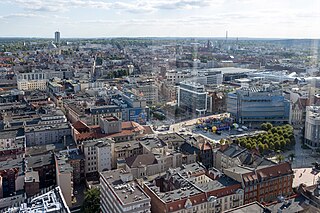
Beata's Hill is a hill in southern Poland, located in Katowice, Poland, which is one of the hills of the Kochłowickie Hills in the Katowice Upland. It is built on rocks from the Upper Carboniferous, and its height is over 323 m above sea level. The top part is occupied by the Tadeusz Kościuszko Park, and on its top there is the church of St. Michael the Archangel.
44. Silesian Freedom And Solidarity Centre
Museum – Memorial Chamber of the Wujek Mine in Katowice – a museum located in Katowice, on the premises of the "Wujek" Coal Mine in the Brynów district. Dedicated to the memory of the pacification of the mine, which took place on December 16, 1981, after the introduction of martial law.
Wikipedia: Muzeum – Izba Pamięci Kopalni Wujek w Katowicach (PL), Website
45. Kościół pw. Świętego Michała Archanioła
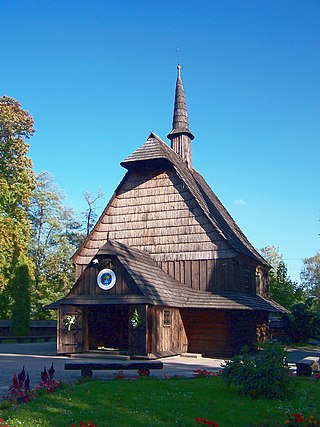
Church of St. Michael Archangel is one of the oldest buildings in Katowice. It is located in Kościuszko Park, where it was moved in 1938 from the village Syrynia, where it was originally constructed in 1510. It is under the invocation of St. Michael.
Wikipedia: Church of St. Michael the Archangel, Katowice (EN), Website
46. Komarzy Szczyt
Cisowa Góra – a hill in southern Poland, located on the Katowice Upland, on the border of Katowice and Chorzów. The top of the hill, reaching a height of 338.8 m above sea level, is located in Katowice and is the second highest natural hill in the city. It is a denudation monadnock, developed from the rocks of the Upper Carboniferous, and is overgrown with the Załęski Forest. In the south-western part of the hill, a nature and landscape complex "Uroczysko Buczyna" has been established.
47. Kościół pw. św. Anny
St. Anne's Church is a Roman Catholic parish church of St. Anne's Parish in Katowice, Poland. It is located in the Janów-Nikiszowiec district, in the central part of the historic Nikiszowiec housing estate, at Wyzwolenia Square. The neo-baroque church was consecrated on October 23, 1927, and the architects of the temple are Emil and Georg Zillmann.
48. Pomnik Józefa Wieczorka
The Józef Wieczorek Monument in Katowice – a monument commemorating the miner of the "Giesche" mine – Józef Wieczorek, located at Zofii Nałkowska Street in the Janów-Nikiszowiec district, opposite the Emil and Georg Zillmann Square.
49. Pomnik Powstańców Śląskich w Nikiszowcu
The Monument to the Silesian Insurgents in Katowice-Nikiszowiec – a monument commemorating the Silesian insurgents, located on the square at Zamkowa Street in Katowice, in the Janów-Nikiszowiec district.
50. Kościół pw. Świętego Stanisława Kostki
The Church of St. Stanislaus Kostka in Katowice is a Roman Catholic parish church of the parish of St. Stanislaus Kostka located in Katowice, in the district of Giszowiec, at Górniczego Stanu Street, consecrated on May 17, 1948. The architect of the temple was Jerzy Krug, while the current interior décor was designed by Helena Szuster. The church is a brick building, and the church building is adjacent to a belfry equipped with two bells. Inside the church, on the side and back, there is a choir, while the ceiling of the church is coffered.
Wikipedia: Kościół św. Stanisława Kostki w Katowicach (PL), Website
51. Kościół pw. św. Jadwigi Śląskiej w Katowicach-Szopienicach
The Church of St. Hedwig of Silesia in Katowice-Szopienice – a historic church in Katowice, located in the Szopienice-Burowiec district, at 3 Powstańców Śląskich Square. The temple building was built in the years 1885–1887 in the neo-Gothic style, while its designer was Carl Gustav Grundmann, and the neighboring Chapel of the Garden of Gethsemane, built in 1903, was designed by Ludwik Schneider.
Wikipedia: Kościół św. Jadwigi Śląskiej w Katowicach-Szopienicach (PL), Website
52. Kaplica Świętej Barbary
The Chapel of St. Barbara at Silesia City Center in Katowice is a Roman Catholic chapel in Katowice, located at 111 Chorzowska Street, in the Dąb district, next to the Silesia City Center shopping mall.
Wikipedia: Kaplica św. Barbary przy Silesia City Center w Katowicach (PL), Website, Facebook
53. Kaplica pw. Świętego Dobrego Łotra
The Chapel of the Good Thief in Katowice – a Roman Catholic cemetery chapel in the cemetery of the Transfiguration parish, located at 32 Gliwicka Street in Katowice, in the Załęże district, right next to the border with the city center, on the so-called Załęskie Przedmieście.
Wikipedia: Kaplica Dobrego Łotra w Katowicach (PL), Heritage Website
54. Kościół Zmartwychwstania Pańskiego w Katowicach
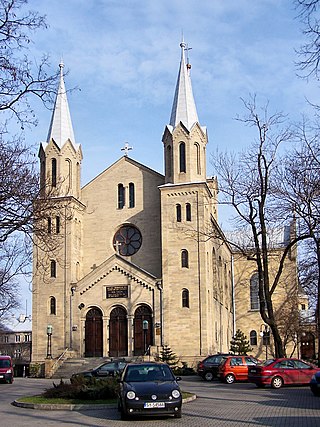
Church of the Resurrection in Katowice is a neo-Roman Evangelical-Augsburg church in the Śródmieście district, Katowice, Poland. It was built in the years 1856–1858 and was the first masonry church in Katowice.
Wikipedia: Church of the Resurrection, Katowice (EN), Website, Heritage Website
55. Mrówcza Górka
Mrówcza Górka is a hill in southern Poland, on the Katowice Upland, within the borders of Katowice. The hill with a height of 305.7 m above sea level was formed on the rocks of the Orzesz layers from the Upper Carboniferous. The watershed of the catchment of three rivers: Rawa, Bolina and Potok Leśny runs through the peak. At its foot in the past there was the Amanda colony, and by 2021 the Nowy Nikiszowiec housing estate was built.
56. Pomnik Henryka Sławika i Józsefa Antalla
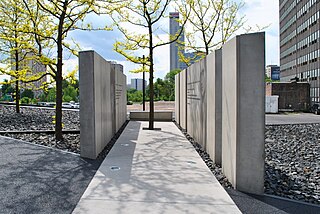
The Monument to Henryk Sławik and József Antall Sr. in Katowice is a monument located in Katowice, located on the square in front of the International Congress Centre. It is dedicated to Henryk Sławik and József Antall senior – heroes of World War II, thanks to whom at least 5 thousand Polish Jews were saved.
Wikipedia: Pomnik Henryka Sławika i Józsefa Antalla seniora w Katowicach (PL)
57. Ławeczka Stanisława Ligonia
Stanisław Ligoń's bench is located in Katowice in front of the building where the Katowice Polish Radio station has been operating since August 1937. The bench-monument was unveiled on 19 October 2012 during the celebration of the 75th anniversary of the radio station in the building at 29 Juliusza Ligonia Street.
58. Kościół pw. Matki Bożej Niepokalanej Jutrzenki Wolności
The Church of the Mother of the Church of the Immaculate Dawn of Freedom – a Roman Catholic parish church in Brynów, Katowice, belonging to the Parish of St. Michael the Archangel in the Katowice-Śródmieście deanery.
Wikipedia: Kościół Matki Kościoła Niepokalanej Jutrzenki Wolności w Katowicach (PL), Website
59. Kościół pw. Świętych Męczenników Jana i Pawła
The Church of Saints John and Paul the Martyrs is a Roman Catholic parish church belonging to the Katowice-Załęże deanery of the Archdiocese of Katowice. It is located in the Dąb district of Katowice.
Wikipedia: Kościół św. Jana i Pawła Męczenników w Katowicach (PL), Website, Heritage Website
60. Katowice Mountaineering Club
The Mountaineers Monument in Katowice – a monument located in Katowice, located in Kościuszko Park, in the vicinity of the historic church of St. Michael the Archangel. This obelisk commemorates the tragically deceased mountaineers – members of the Katowice Mountaineering Club.
61. kaplica Najświętszego Serca Pana Jezusa
The Chapel of the Sacred Heart of Jesus in Katowice – a historic, Roman Catholic cemetery chapel, located in the parish cemetery of the parish of St. Stephen in Katowice, in the Bogucice district. It was built in 1910 and designed by Mansuetus Fromm OFM in the neo-Romanesque style.
Wikipedia: Kaplica Najświętszego Serca Pana Jezusa w Katowicach (PL), Heritage Website
62. Centrum Kultury Islamu
The Islamic Cultural Centre in Katowice is a religious institution run by the Silesian Branch of the Muslim League in Poland, founded in 2007. It is based in Katowice at 50a Warszawska Street, in the Śródmieście district.
Wikipedia: Centrum Kultury Islamu w Katowicach (PL), Website
63. Kapliczka Matki Boskiej
The Chapel of Our Lady in Katowice-Dębie – a historic, neo-Gothic chapel of a cottage type, located at the corner of Dębowa and Źródlana streets in Katowice, in the Dąb district. It was founded in 1893 by Antoni and Józefa Kracel. It is located in the Roman Catholic parish of St. John and Paul the Martyrs.
Wikipedia: Kaplica Matki Bożej w Katowicach-Dębie (PL), Heritage Website
64. Kościół Wniebowzięcia Najświętszej Maryi Panny
The Church of the Assumption of the Blessed Virgin Mary in Katowice is a Roman Catholic parish church of the Assumption of the Blessed Virgin Mary at Graniczna Street in the Katowice district of Osiedle Paderewskiego-Muchowiec.
Wikipedia: Kościół Wniebowzięcia Najświętszej Maryi Panny w Katowicach (PL), Website
65. Kościół pw. Podwyższenia Krzyża i Świętego Herberta
The Church of the Exaltation of the Holy Cross and St. Herbert in Katowice is a Roman Catholic parish church of the Exaltation of the Holy Cross and St. Herbert at Barlickiego Street in the Witosa district of Katowice.
Wikipedia: Kościół Podwyższenia Krzyża Świętego i św. Herberta w Katowicach (PL), Website
66. Bazylika Świętego Szczepana
The Basilica of St. Stephen and Our Lady of Bogucka in Katowice – a Roman Catholic parish church in Katowice, belonging to the parish of St. Stephen, entered into the register of immovable monuments of the Silesian Voivodeship. It is located at the intersection of Ks. L. Markiefki and Leopolda streets, in the Bogucice district.
Wikipedia: Bazylika św. Szczepana i Matki Boskiej Boguckiej w Katowicach (PL), Website , Heritage Website
Share
Disclaimer Please be aware of your surroundings and do not enter private property. We are not liable for any damages that occur during the tours.
